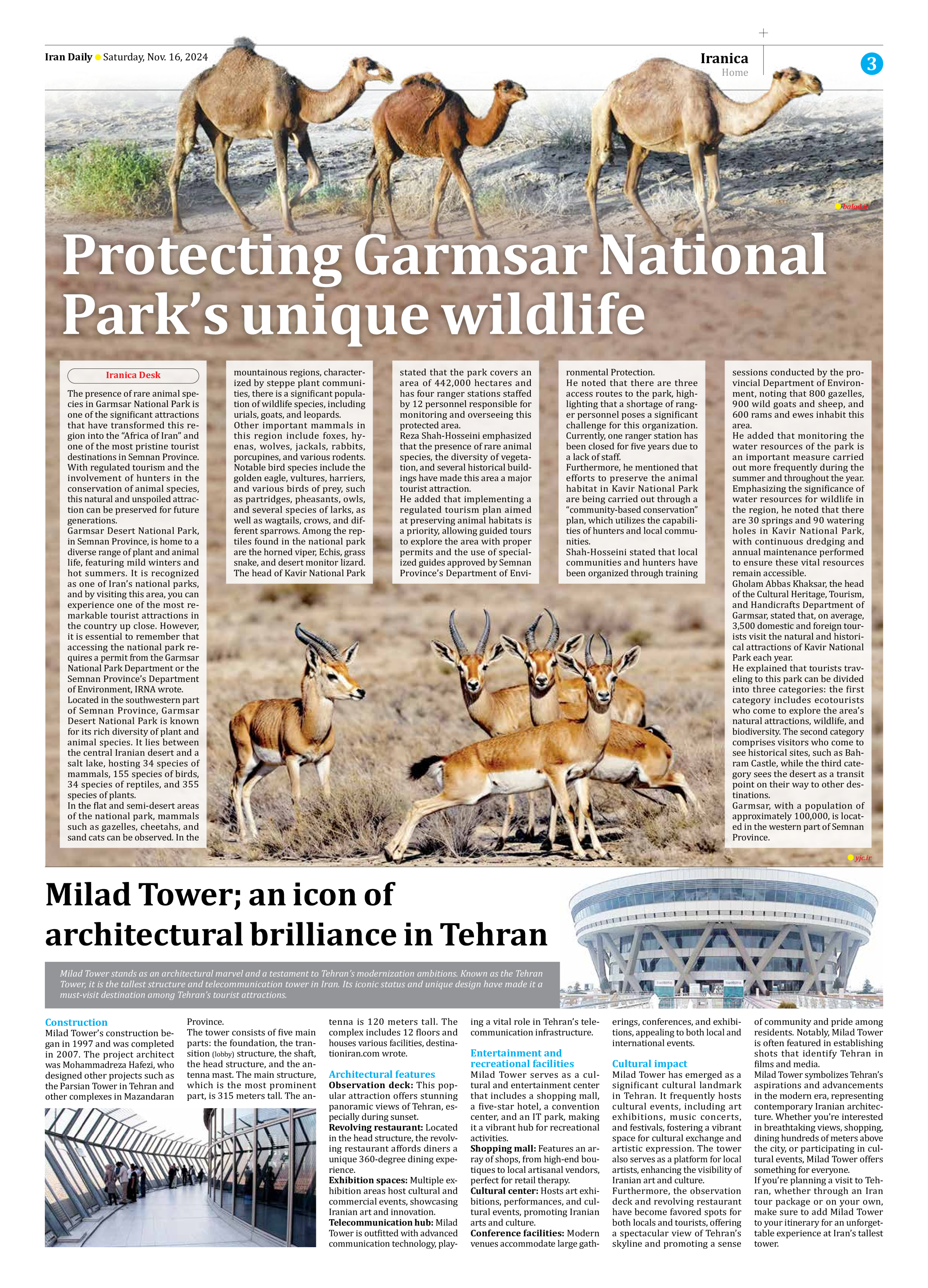
Protecting Garmsar National Park’s unique wildlife
The presence of rare animal species in Garmsar National Park is one of the significant attractions that have transformed this region into the “Africa of Iran” and one of the most pristine tourist destinations in Semnan Province.
With regulated tourism and the involvement of hunters in the conservation of animal species, this natural and unspoiled attraction can be preserved for future generations.
Garmsar Desert National Park, in Semnan Province, is home to a diverse range of plant and animal life, featuring mild winters and hot summers. It is recognized as one of Iran’s national parks, and by visiting this area, you can experience one of the most remarkable tourist attractions in the country up close. However, it is essential to remember that accessing the national park requires a permit from the Garmsar National Park Department or the Semnan Province’s Department of Environment, IRNA wrote.
Located in the southwestern part of Semnan Province, Garmsar Desert National Park is known for its rich diversity of plant and animal species. It lies between the central Iranian desert and a salt lake, hosting 34 species of mammals, 155 species of birds, 34 species of reptiles, and 355 species of plants.
In the flat and semi-desert areas of the national park, mammals such as gazelles, cheetahs, and sand cats can be observed. In the mountainous regions, characterized by steppe plant communities, there is a significant population of wildlife species, including urials, goats, and leopards.
Other important mammals in this region include foxes, hyenas, wolves, jackals, rabbits, porcupines, and various rodents. Notable bird species include the golden eagle, vultures, harriers, and various birds of prey, such as partridges, pheasants, owls, and several species of larks, as well as wagtails, crows, and different sparrows. Among the reptiles found in the national park are the horned viper, Echis, grass snake, and desert monitor lizard.
The head of Kavir National Park stated that the park covers an area of 442,000 hectares and has four ranger stations staffed by 12 personnel responsible for monitoring and overseeing this protected area.
Reza Shah-Hosseini emphasized that the presence of rare animal species, the diversity of vegetation, and several historical buildings have made this area a major tourist attraction.
He added that implementing a regulated tourism plan aimed at preserving animal habitats is a priority, allowing guided tours to explore the area with proper permits and the use of specialized guides approved by Semnan Province’s Department of Environmental Protection.
He noted that there are three access routes to the park, highlighting that a shortage of ranger personnel poses a significant challenge for this organization. Currently, one ranger station has been closed for five years due to a lack of staff.
Furthermore, he mentioned that efforts to preserve the animal habitat in Kavir National Park are being carried out through a “community-based conservation” plan, which utilizes the capabilities of hunters and local communities.
Shah-Hosseini stated that local communities and hunters have been organized through training sessions conducted by the provincial Department of Environment, noting that 800 gazelles, 900 wild goats and sheep, and 600 rams and ewes inhabit this area.
He added that monitoring the water resources of the park is an important measure carried out more frequently during the summer and throughout the year. Emphasizing the significance of water resources for wildlife in the region, he noted that there are 30 springs and 90 watering holes in Kavir National Park, with continuous dredging and annual maintenance performed to ensure these vital resources remain accessible.
Gholam Abbas Khaksar, the head of the Cultural Heritage, Tourism, and Handicrafts Department of Garmsar, stated that, on average, 3,500 domestic and foreign tourists visit the natural and historical attractions of Kavir National Park each year.
He explained that tourists traveling to this park can be divided into three categories: the first category includes ecotourists who come to explore the area’s natural attractions, wildlife, and biodiversity. The second category comprises visitors who come to see historical sites, such as Bahram Castle, while the third category sees the desert as a transit point on their way to other destinations.
Garmsar, with a population of approximately 100,000, is located in the western part of Semnan Province.







